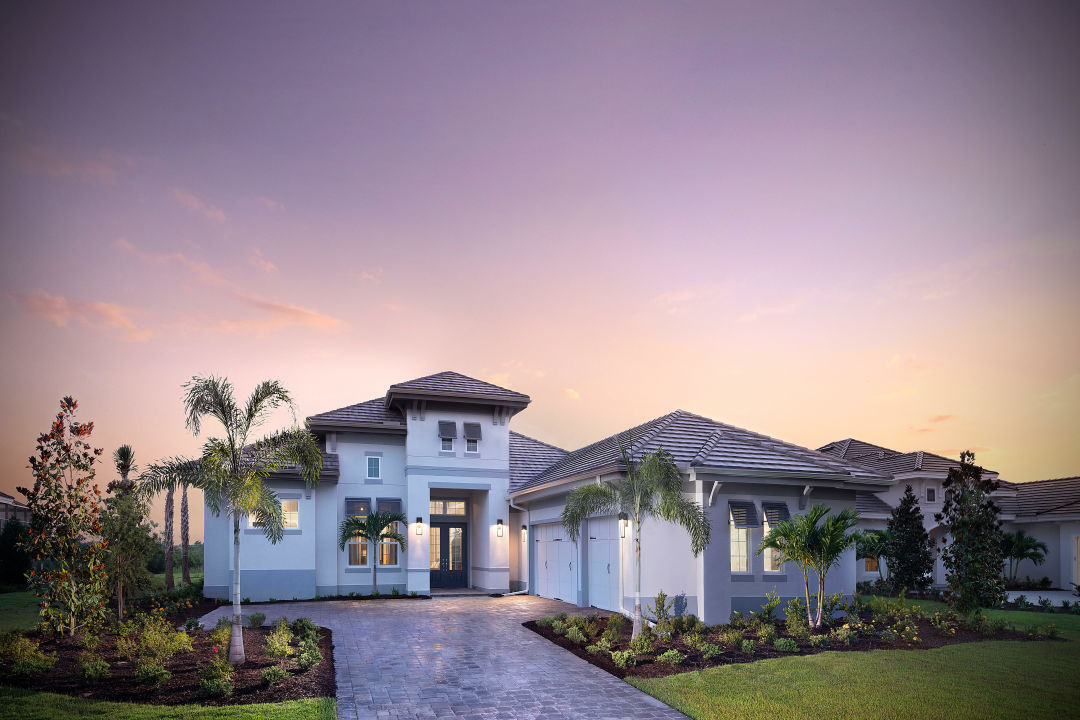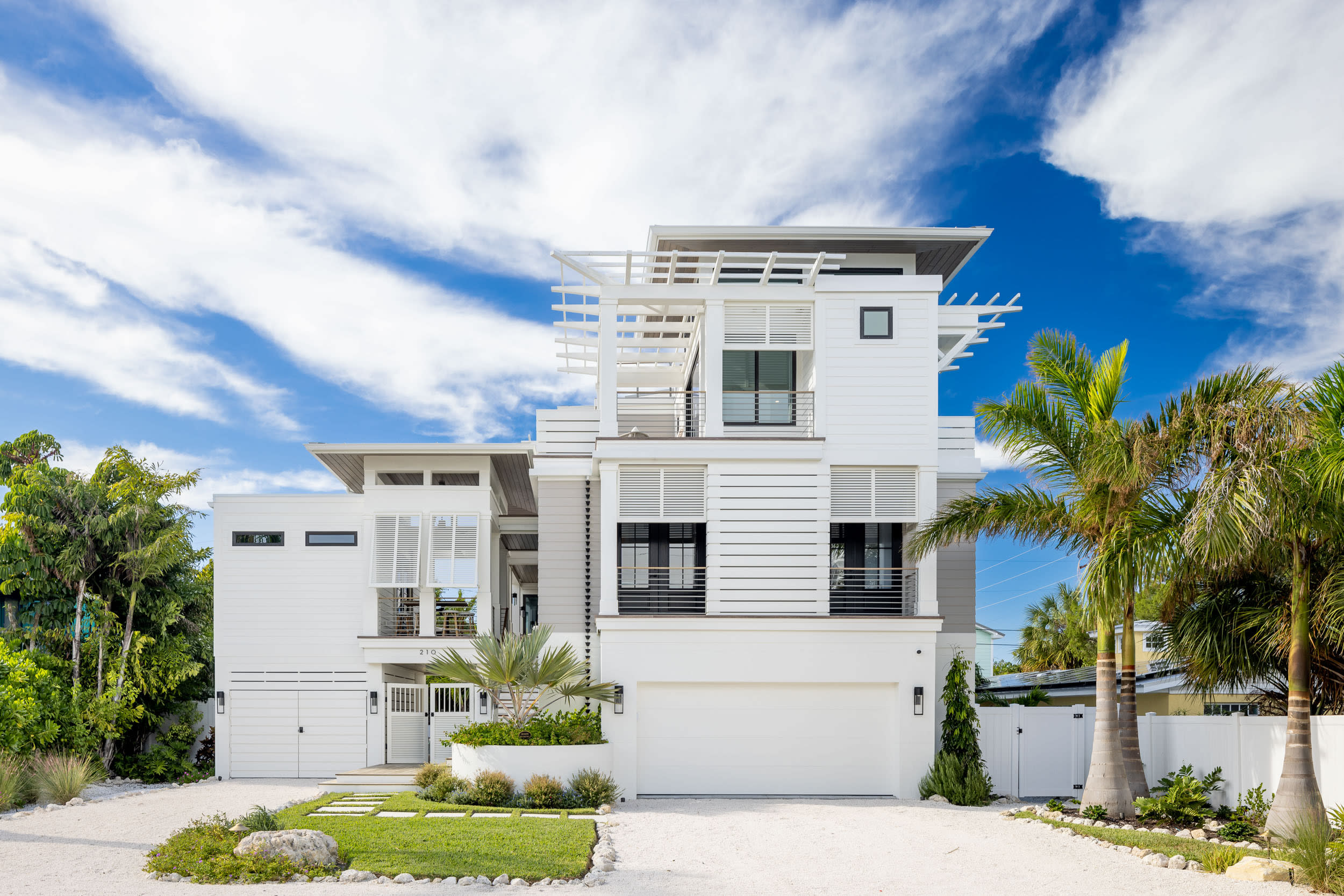Covid-19 Has Ushered In a New Demand for Keeping Three Generations Under One Roof

Rendering of the Madison II multi-generational home in the Lake Club in Lakewood Ranch where Janice Merkell lives with her husband, mother and son.
Image: Courtesy Photo
If Janice Merkell was going to see her mother again, she was going to have to move her family across state lines. Merkell’s mother was in assisted living in New Jersey, and after six months of Covid-related safety shutdowns, she decided to get her mom out and head south.
“If it hadn't been for the pandemic, I don't know how receptive my mom would have been to moving. This was her way out of assisted living. I’m caring for her now,” Merkell says.
Before they moved there, Merkell's son, Spencer, had lived in Lakewood Ranch for a year and a half. During the pandemic, seeing him was a challenge, but “we fell in love with the area every time we came to visit him, and we just fast-forwarded our plans to move,” Merkell says.
She was in marketing and advertising for a real estate company and her husband, Don, was a real estate broker in New Jersey who is working on getting his Florida license.
They now all live together in 3,200-square-foot home model called the Madison II in The Lake Club, one of the swankiest villages Lakewood Ranch. Living together is working out, and sharing meals daily has become a household habit. Spencer, who is 26, now has his own wing in the house with a sitting room, bedroom and bathroom, and his own entrance from the garage. They’re turning a library into a space where he can entertain.
The biggest challenge, Merkell says, is “getting us all on the same page for when we go out.” A novelty she never tires of is getting everyone together and eating out by the water.
Merkell isn't alone. Keeping the family under one roof is on the uptick.
A Generations United 2021 report titled Family Matters: Multigenerational Living is on the Rise and Here to Stay, finds that the number of Americans living in a multigenerational household—that is, with three or more generations—has nearly quadrupled over the past decade, with a dramatic increase of 271 percent from 2011 to 2021.
Today more than 51.4 million Americans of all ages—or roughly one in six—live in multigenerational households, a more than 10 percent increase since the start of the Great Recession in 2007.
More than half, 57 percent, say they started or are continuing to live together because of the pandemic. And about seven in 10 of those currently living in multigenerational households plan to continue doing so long-term.
“We had more requests for multigenerational homes at our information center during the pandemic,” says Laura Cole, senior vice president of Lakewood Ranch.
She's not sure how many multigenerational homes in the master-planned community have sold since the onset of Covid-19 because it's a tough number to drill down. She points out that many homebuyers adapt homes to fit their needs, whether they’re labeled or used as multigenerational or not.
One example of this is John Revaitis, who moved his family from Long Beach Island in New Jersey to a multigenerational home in Polo Run, Lakewood Ranch, in July of last year, mostly to accommodate visitors.
“We chose the 'NextGen' home for when the family comes down they have their own kitchen, garage and bathroom. And it’s for friends who visit, too,” he says.
Kyle Bernethy, Southwest Florida vice-president of sales for Lennar, a major builder in Sarasota and Manatee counties that builds the NextGen home model, says, “There was a big interest in sales after Covid regulations came about. A lot of families are using the extra space as a workplace. When you're used to going to the office, it’s a challenge to work at the dining room table, and a dedicated closed-off space is just a necessity.”
For Cole, regardless of the home model layout, "we want to be a holistic system to support the whole family. Sometimes that's the multigenerational home," she says. "In different communities, there are shared amenities designed to get people of all ages together, because interaction between families is critical."
Lakewood Ranch is the best-selling community in the nation, according to a mid-year survey by the national real estate firm RCLCO. There were 1,535 new home sales through the end of June 2021, surpassing last year’s numbers by 83 percent.
Buyers moving from more urban, high-density cities and communities in California, New Jersey and New York, among others, have found more square footage for their dollar, along with proximity to nature trails and amenities. Home prices range from the $200,000s to more than a million. Multigenerational models there typically fall in the $500,000 to $600,000 range.
Lakewood Ranch, all 33,000-plus acres of it, is a thriving metropolis of almost 18,000 homes and nearly 43,000 residents—and growing–and a total of 39,968 homes is currently planned at build-out years from now. There are 1,800-plus businesses, from mom-and-pop pizzerias to corporate headquarters, lots of educational opportunities and medical facilities, from a hospital to LECOM, one of the country’s largest schools of dentistry, and a huge range of recreational amenities including 11 community parks and 150 miles of trails.
According to Cole, there is no move-in-ready inventory and "builders are still trying to catch up with their backlogs of homes they've sold, so they're being judicious about the lots they release." But upcoming opportunities are on the horizon.
Waterside Place, the area’s newest town center, is slated to open this fall and host a permanent farmers’ market. Two new villages, Star Farms and Sweetwater, will be added to the area’s 21 new home villages by the end of the year. Forestar Group Inc. is building Star Farms, which is specifically focused on multigenerational living.
Farther west in Sarasota, adding additional dwelling units on lots zoned for single-family homes was recently passed city-wide, allowing for more opportunities for multigenerational living—one of the supporting arguments that got the increased density OKed.



